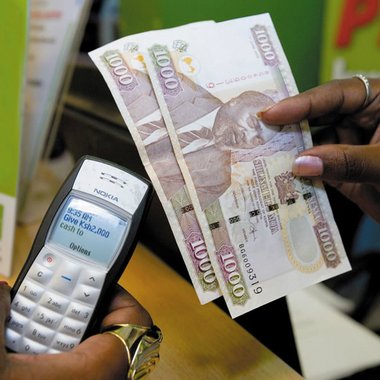
- Five minutes read
Why the US is moving away from cash-based remittances
Economic migrants in the US are set to move to digital remittances methods, due to COVID-19 and other factors.
COVID-19 has dramatically altered the way many are managing their own finances, while simultaneously continuing to support friends and family living overseas that are facing comparable challenges in a beleaguered economy. In the US, for example, minority populations are more likely to hold vulnerable jobs, often in sectors with no ‘work from home’ option, but have still been expected to send money home regularly to their dependents during the pandemic.
June figures from the US Bureau of Labour Statistics showed an unemployment rate of 17.6% amongst Latinos, which was higher than any other demographic and partially helps to explain greater inconsistencies in outbound remittances to countries like Mexico, Guatemala, Honduras and El Salvador. The Pew Research Centre estimates people from these four countries represent 64% of the 10.5 million undocumented immigrants living in the US in 2017, and central bank data reveals that in 2019 a record $57.7 billion was sent to these four countries via remittances channels.
Remittances in a down economy
At a more granular level one can look at El Salvador, which according to April central bank figures experienced a 40% year-on-year drop in remittances compared to 2019. Guatemala saw a 20% year-on-year decrease for the same period. These are just some of the numbers that serve to contextualize the strain placed on migrant workers who rely on a robust US economy to support not only themselves but family members in their country of origin.
An April 2019 Migration and Development Brief from the World Bank identified a strong US economy in 2018, which saw the lowest unemployment in 50 years and strongest GDP growth since 2015, as a key reason for a 10% increase in remittances to Latin America and the Caribbean that year. This represented $88 billion in growth - $36 billion of which was credited to Mexico for an 11% increase on the previous year. Colombia (16%), Ecuador (8%), Guatemala (13%), Dominican Republic (10%) and Honduras (10%) each saw comparable growth for remittances from the US over the same period.
But as the number of COVID-19 cases across the country continue to increase, both the short- and long-term forecasts for the US economy remain uncertain. In the first week of July alone, Arizona, California, Florida and Texas confirmed a combined 25,000 new cases. Those findings coincided with reporting that infections were on the rise across 40 of the 50 states, exacerbating the plight of millions of US workers across various sectors that rely on an active economy for employment.
The need for convenience and affordability
While it is certainly true that the underlying economic issues described in this article can only be alleviated by the government, there is also a corresponding opportunity for the payments sector to step to the fore and support those that are struggling with remittance solutions that are safe, accessible and boast favorable exchange rates. Meeting these criteria are essential to addressing both current and future demands for modernized remittance services, which include finding alternatives to traditional remittance services that require in-store cash-based transactions.
While digitized services are already available, COVID-19 is certain to drive heightened expectations with regards to speed and cost as adoption rates continue to rise in response to less accessible in-store outlets and reservations many will have concerning in-person interactions. This combination of factors could establish a new normal in which the convenience and security of digital remittances gradually unseats cash-based transactions, which still represent 70% of all remittances, as the preferred option among the most common users.
Evidence supports move to digital solutions
Our Lost in Transaction research from April 2020 supports the narrative of steadily increasing popularity for digital remittances. When asked how they would prefer to send money to friends and family abroad, 38% of US respondents said they would prefer to use a digital wallet. The next most popular response was from 15% of those who said they did not know how they would send those funds, indicating that the need for education is real with a sizeable segment unfamiliar with the availability of digital transfer services.
This response should provide an optimistic outlook for those specializing in digital remittances, as it reveals an opportunity to build confidence in the eyes of prospective users, evaluating their services against traditional in-store methods. As mentioned, convenience and cost-effectiveness will be among the key determinants as to whether they can be converted into long-term users, willing to embrace the emerging technology.
Additional questions even more specific to COVID-19 only reinforce the potential for wider adoption. When asked how they had given money to friends or family during COVID-19, 43% of respondents said they used bank transfer, followed closely by digital wallet or P2P app (42%) and cash (41%), suggesting that many relied on a combination of solutions.
A follow-up question revealed that 51% of those who did not use cash said it was due to health and safety concerns. Making the stat even more notable was that it was the dominant response across every demographic from 18 to 54, including 64% of those 35-44. A further 24% responded that they do not use cash.
A time for educating prospective users
When isolation measures are eventually reduced to the point where people may again be comfortable with the handling and exchanging of cash, it will be important that they are also equipped with an awareness of the benefits associated to using digital remittances. This assumes that physical locations can effectively return to normal service levels and hours of operation in a short timeframe, something that is far from a guarantee at this time.
In reviewing these numbers, it is important to be mindful of those most reliant on remittances, especially when confronting an unpredictable economic future. Digital remittance solutions like Skrill Money Transfer, which are both low-cost and accessible, are poised to become an increasingly valuable source of support for those demographics and their families during the COVID-19 pandemic, especially for those looking for a cheaper alternative to traditional banking services.
Paysafe recently launched its US Skrill Money Transfer service, making it possible for Skrill customers in the United States to transfer money for free to Mexico, India and 16 other Asian and European countries, with others available shortly. To find out more visit the Skrill website.




